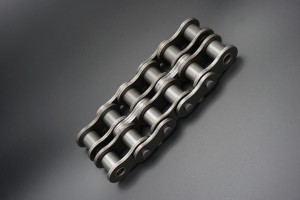Roller chains are the unsung heroes of many industrial systems, efficiently transferring power and motion between different mechanical components. Despite its small size, roller chain plays a vital role in keeping all kinds of machinery running smoothly and efficiently. However, one question that often plagues engineers and maintenance personnel is how to determine the proper number of links in a roller chain. In this article, we demystify the process and give you the knowledge you need to confidently count roller chain links.
Before diving into the details, let us first understand the basic structure of a roller chain. A roller chain consists of a series of interconnected links, usually made of steel, forming a continuous loop. Each link consists of two inner plates, two outer plates, two bushings and a roller. The rollers are responsible for reducing friction and allowing the chain to mesh smoothly with the sprockets.
To calculate the number of links in a roller chain, two basic factors need to be considered: the pitch and the length of the chain. Pitch refers to the distance between the centers of two adjacent rolling pins, while chain length refers to the total distance traveled by the chain when it is straight.
First, you need to determine the correct pitch for your roller chain. The pitch is usually specified by the manufacturer and can be found on the chain’s technical data sheet. Once you have this information, you can proceed to calculating the required chain length. This is where understanding the specific application becomes critical.
First, measure the distance between the centers of the sprockets you want to connect with the roller chain. Add at least one more link pitch to this measurement to ensure adequate tension and flexibility. It is important to account for any potential misalignment, eccentricity or differences in distance between sprockets due to operating conditions.
Next, consider operating conditions and factors such as tension, chain elongation from wear, and any other factors specific to your application. By taking these variables into account, you can ensure that the chain is of sufficient length and remains within the recommended limits for its application.
Also, it’s important to consider whether you need the exact number of links, or whether you can accommodate a chain that might be slightly longer but still be compatible with your system. Roller chain is usually sold in standard lengths, so your calculations should be rounded up to the nearest available chain pitch multiple.
Remember, when it comes to roller chains, it’s always safer to choose a slightly longer chain. This will allow for adjustments, replacements, and even system modifications in the future.
In conclusion, determining the number of links in a roller chain requires careful consideration of the pitch, length and specific requirements of the application. By following the steps outlined in this article and consulting the manufacturer’s guidelines, you can confidently select a roller chain that will ensure optimal operation of your machine.
So next time you find yourself faced with the bewildering challenge of determining the number of links you need for your roller chain, don’t worry. With the knowledge in this article, you will be able to choose the ideal chain to ensure robust and seamless performance within your industrial system.
Post time: Jul-19-2023

